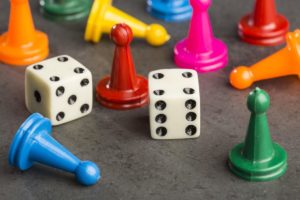The quote on my work email states,
“If a child can’t learn the way we teach, maybe we should teach the way they learn.” -Ignacio Estrada
This has always been my goal, but since I have been researching for this blog, I have found renewed energy to really put this quote into action. One article I read, “Does Our Natural Affinity for Games Have a Place in the Classroom?” by Adam Moler, really sparked a new flame. He talks about incorporating gaming into the classroom. I think most of us “more seasoned” teachers remember playing The Oregon Trail simulation. I remember being excited for choosing the correct gear to take across the plains in my wagon and using my mistakes to plan better for the nest trip. It was THE educational game of the 80’s! It was gaming when gaming wasn’t popular. Now that gaming is popular, where is the application in the classroom?

Moler suggests that we bring back the Oregon Trail idea with a renewed gaming facelift. This could be done by creating learning scenarios with experience points, badges, avatars, and quests. You can find his article at https://www.edutopia.org/article/does-our-natural-affinity-games-have-place-classroom
Jennifer Gonzalez https://www.cultofpedagogy.com/do-something/ , throws some teaching caution into the mix. She is worried we are teaching things that are not even found in the core. Memorizing facts, dates, events, and people need to be replaced with doing something! She stakes, “If we want our students to actually lean the facts and concepts and ideas we’re trying to teach them, they have to experience those things in some way that rises above the abstract words on paper. They have to process them. Manipulate them. To really learn in a way that will stick, they have to DO something.”
She suggests that in between the direct instruction and assessment step of our planning we start adding some of these activities:
- Sorting
- Kinesthetic work
- Discussion
- Graphic representations
- Write to learn
- Mini-projects
- Anticipation guides
- Quality note-taking
- Retrieval practice
- Collaboration
For a more detailed look at her suggestions, visit the link above and read her article, “To Learn, Students Need to DO Something.”
